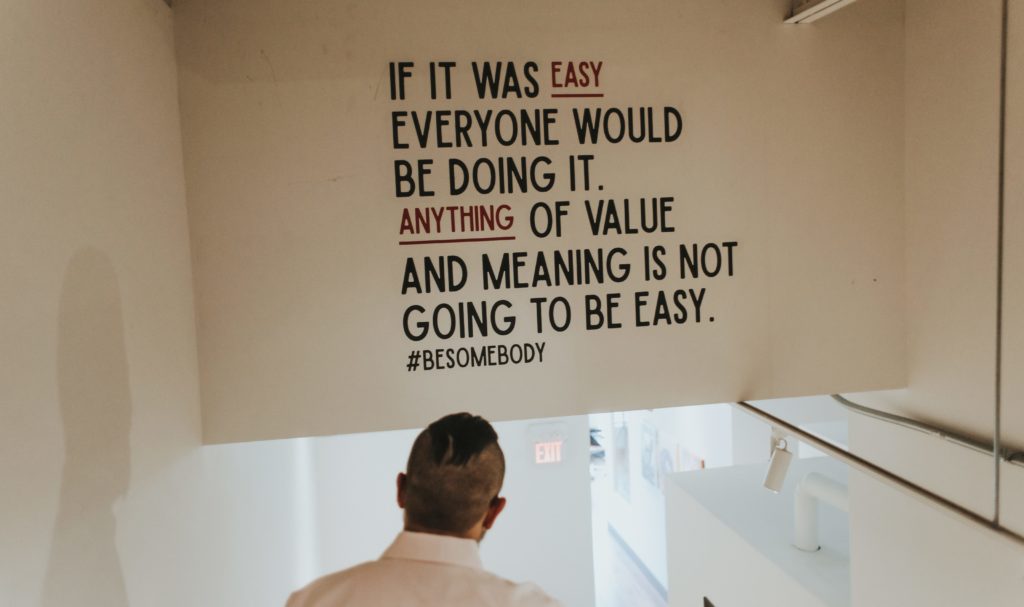Feb. 2, 2018

How I Apply the Kaizen Approach in my Daily Life
There are many theories about management and how to increase productivity and innovation. Few systems, however, have a track record that matches the Japanese concept of Kaizen, which essentially means constant improvement. It’s always difficult to translate terms into different languages and cultures. After many years, I’ve found that Kaizen is extremely nuanced and complex which goes beyond our usual ideas of self-help. I’ve also found that the Kaizen Approach isn’t only applicable to business but to all areas of life.
Check out my breakdown on how to utilize Lean Kaizen & involve your team in the conversation or keep reading below.
Origin of Kaizen
 The word “Kaizen” is a combination of “kai” and “Zen.” Most westerners have heard of Zen, a school of Buddhism that focuses on simplicity, living in the present, and removing extraneous rituals from spiritual practice. “Kai” refers to change. Putting these two profound concepts together, we have the idea of using Zen principles to improve any type of skill, process, or activity. Kaizen, conceived in Japan after World War II, is especially associated with the automobile company Toyota, known for its high standards and effective management strategies.
The word “Kaizen” is a combination of “kai” and “Zen.” Most westerners have heard of Zen, a school of Buddhism that focuses on simplicity, living in the present, and removing extraneous rituals from spiritual practice. “Kai” refers to change. Putting these two profound concepts together, we have the idea of using Zen principles to improve any type of skill, process, or activity. Kaizen, conceived in Japan after World War II, is especially associated with the automobile company Toyota, known for its high standards and effective management strategies.
The philosophy of Kaizen was systematized by author and consultant Masaaki Imai, who studied and compiled data on productivity principles. In addition to founding an institute dedicated to the study of Kaizen, he wrote an influential book on the subject called “Kaizen: Japanese Spirit of Improvement,” published in 1985. With the help of Imai, Kaizen became better known in the West as many companies wanted to follow the example of Toyota.
Principles of Kaizen
Kaizen can be broken down into 10 major principles.
- Strive for continuous improvement. Things can always get better no matter how good or bad they may be now.
- Always questions tradition and, when necessary, discard the old to make way for the new.
- Acquire wisdom by consulting with many people rather than relying on one expert.
- Don’t waste time making excuses but focus on finding solutions.
- Make sure you base your decisions on facts rather than opinions.
- Get to the root cause of a situation or problem by asking “Why?” at least 5 times.
- Before spending money to fix a problem, look for simple and inexpensive solutions.
- Always question the status quo.
- Start making improvements right away, even if you don’t yet have all the answers.
- Make sure everyone is involved. Real change must include everyone who works on a project, not only those at the top. At Toyota, for example, any worker has the authority to stop production if he notices a problem.
There are many ways to interpret Kaizen so you may find some variations on the above principles. These points, especially when taken together are more powerful than they first appear. Keep in mind that Kaizen was never merely an abstract theory. When Imai and others developed the ideas of Kaizen, they were basing it on observation of people and companies that were accomplishing incredible results.
Ways I Apply Kaizen to my Everyday Life
 While Kaizen is known as a management philosophy, it’s actually much more than that. In my experience, you first have to see that it isn’t a vague notion about improving yourself. It’s an extremely sophisticated and nuanced way to look at life.
While Kaizen is known as a management philosophy, it’s actually much more than that. In my experience, you first have to see that it isn’t a vague notion about improving yourself. It’s an extremely sophisticated and nuanced way to look at life.
To take one example out of the above 10 principles, I find it especially insightful to ask “Why?” multiple times to get to the root of an issue. Suppose I’m thinking about going on a new diet I read about. I’ll ask myself “Why?” The answer might be, “So I can lose 15 pounds.” Then I’ll ask, “Why do I want to lose this weight?” The answer to this might be, “So I can feel and look better.” At this point, it may seem silly to keep asking why but, why not? I might then find out something, such as “So I can have more energy to accomplish more and hopefully be around longer to spend time with my family.”
On the other hand, I might find that the answer is less compelling. If my main motivation for going on the diet is that other people at the office are doing it, I might decide to opt out. Asking yourself questions helps you understand your own motivations. You may not always need to literally ask “Why?” five times, but you can often learn something by asking it at least two or three.
Here are some of the areas of my life that I’ve found can be improved by these principles.
- Relationships – Both close relationships and everyday interactions can be improved in many small ways. Consider the difference between ending a conversation with a brusque nod as opposed to looking the other person in the eye, smiling, and shaking his or her hand. Taking the time to call your spouse when you’re at work or away on business is a way to show you’re thinking about him or her (my wife and I talk frequently). Small differences in language also alter the way other people feel and react, whether you’re talking to someone in person, on the phone, or online.
- Time Management – Managing your time is just as important in your personal life as in your business. People often think that if they had extra hours they’d get a lot more accomplished. Kaizen, however, has helped me to appreciate the value of small blocks of time. For example, if I get up 15 minutes earlier than usual, I can fit in a short but invigorating workout in the morning. Watching one less mindless half-hour TV program every night gives me an extra 3.5 hours of time per week I can put to better use.
- Exercise and Fitness – You can often get better results by making tiniest changes. A small shift in the way you hold your hockey stick can make a big difference in the results. Changing your form slightly when lifting weights can be the difference between getting stronger and hurting your back, I know, I’ve tried.
While I’ve listed some examples, the real beauty of Kaizen is that it’s a way of living that can help you in any situation. Ideally, you don’t use it now and then, but all the time. One of the central concepts of Zen is to live in the present. Unless you’re a meditation master, your mind probably tends to wander a good deal of the time (mine does). However, you can always make an effort to bring it back to the now. Kaizen takes this a step further and challenges you to look for ways to improve in each moment.
Continuous vs. Discrete

The real key to understanding and applying Kaizen is focusing on the idea of continuous improvement. In the modern Western world, we’re more accustomed to thinking in terms of large-scale changes. It shouldn’t be surprising that the Japanese came up with a more subtle approach that appreciates smaller and incremental changes.
When considering the goal of continuous improvement, it’s also useful to borrow terminology from statistics and mathematics, where graphs can be either continuous or discrete. If something is discrete, it’s countable. And when it’s continuous, there are no quantifiable points to measure. An easy way to illustrate this is to contrast a digital clock or watch with an old-fashioned one with hands. Digital clocks measure time in a discrete manner. It goes from 10:00 to 10:01 and so forth. Hands on a clock, however, don’t stop at exact points but move in a continuous manner.
It’s interesting to note that discrete numbers are really a fiction or oversimplification. There is actually an infinite number of fractional numbers in between whole ones. One example of this can be found in a swim race where time is measured in milliseconds . In everyday life, we don’t need such precision so we stick to seconds and minutes. Time, however, actually moves in a continuous flow. In a similar way, when we’re in a creative state of mind or “going with the flow,” we’re more attuned to the continuity of existence and less fixated on discrete categories and moments.
In Conclusion
 We might say that the spirit of Kaizen is more about finding the flow of change rather than looking for measurable steps. This isn’t to say that large and quantifiable improvements don’t occur. They certainly do or companies such as Toyota wouldn’t be so successful. The point, however, is that you aren’t striving for brilliant insights but simply trying to do a little better moment by moment.
We might say that the spirit of Kaizen is more about finding the flow of change rather than looking for measurable steps. This isn’t to say that large and quantifiable improvements don’t occur. They certainly do or companies such as Toyota wouldn’t be so successful. The point, however, is that you aren’t striving for brilliant insights but simply trying to do a little better moment by moment.
In essence, aim for micro improvements in your day to day life. Don’t overthink it, just get going with it. What you’ll find as time passes are subtle continual improvements which will empower you to set the next set of goals.
Thanks for checking out my blog, if you’d like to chat further about Kaizen or any other topics surrounding nvision, feel free to reach out anytime!
Book with us
Let’s accomplish what you are looking for, our team of experts are here for you.
Let's work togetherWarning: Working with our team may result in excessive creativity, uncontrollable 'aha' moments, and an addiction to perfect pixels. Please proceed with caution.



